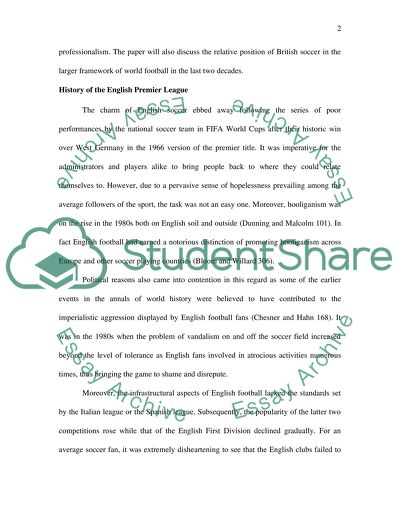Cite this document
(“How has commercialisation affected professional football since the Essay”, n.d.)
Retrieved from https://studentshare.org/miscellaneous/1562043-how-has-commercialisation-affected-professional-football-since-the-formation-of-the-premier-league-and-what-effect-has-this-had-on-the-average-fan
Retrieved from https://studentshare.org/miscellaneous/1562043-how-has-commercialisation-affected-professional-football-since-the-formation-of-the-premier-league-and-what-effect-has-this-had-on-the-average-fan
(How Has Commercialisation Affected Professional Football since the Essay)
https://studentshare.org/miscellaneous/1562043-how-has-commercialisation-affected-professional-football-since-the-formation-of-the-premier-league-and-what-effect-has-this-had-on-the-average-fan.
https://studentshare.org/miscellaneous/1562043-how-has-commercialisation-affected-professional-football-since-the-formation-of-the-premier-league-and-what-effect-has-this-had-on-the-average-fan.
“How Has Commercialisation Affected Professional Football since the Essay”, n.d. https://studentshare.org/miscellaneous/1562043-how-has-commercialisation-affected-professional-football-since-the-formation-of-the-premier-league-and-what-effect-has-this-had-on-the-average-fan.


